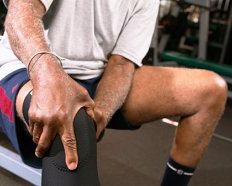Oversight Info
Authority
Ireland: University of Limerick
Has Dmc
Yes
Brief Summary
The aim of this study is to investigate if set dancing is beneficial and feasible for those
with Parkinson's disease in Ireland. The hypothesis of this feasibility study are that:
- Participants will be able to partake fully in the intervention without reporting
adverse events.
- There will be evidence of gains in functional exercise tolerance, balance, motor
performance and quality of life in those with Parkinson's disease who participate in
eight weeks of set dancing classes compared to a control group.
Detailed Description
Background: Previous research has found that people with Parkinson's disease
who participatein dance classes have improved functional exercise capacity, mobility,
balance and quality of life (Duncan and Earhart 2012; Hackney and Earhart 2009). Dance may be an
effectiveintervention for people with Parkinson's disease as it targets key components of
rehabilitation programmes for people with Parkinson's disease (Earhart 2009). These
components include use of cueing strategies, training of muscle power and balance and
focusing of attention on movement strategies.
The benefit of many forms of dance have being investigated in people with Parkinson's
disease including Tango, (Hackney et al 2007), Contact Improvisation (Marchant et al
2010)and modern dance (Batson 2010). However, recently Irish set dancing has also
being found to be beneficial for those with Parkinson's disease (Volpe 2012). Irish Set
dancing may bebeneficial for people with Parkinson's disease as it involves continuous
movement initiationand cessation along with focusing of attention on body posture
and foot placement (Hackneyand Earhart 2010). However, research to date has
not been conducted in the Irish population.
It is important to investigate if set dancing is beneficial for people with Parkinson's
disease in Ireland as results may be influenced by the familiarity which the Irish
population has for set dancing.
The objectives of the study are:
- To compare functional exercise tolerance, balance, motor performance and quality of
life in those with Parkinson's disease before and after participating in set dancing
classes, using the following validated outcome measures: Unified Parkinson's Disease
Rating Scale 3, Berg Balance Scale, The Parkinson's Disease Questionnaire and The
Six-Minute Walk Test.
- To compare functional exercise tolerance, balance, motor performance and quality of
life in those with Parkinson's disease participating in set dancing classes to those
receiving usual care.
- To assess the effect of the intervention on care giver burden using the Zarit Care
Giver Burden Interview.
Participants, who meet inclusion/exclusion criteria, will be randomly assigned to a group
who will receive a set dancing intervention along with their usual care or to a control
group who will continue with their usual care only. Participants will be assessed the week
before the intervention period begins and the week after the intervention period ends using
valid and reliable outcome measures. A follow-up assessment will take place three months
after the final class has taken place.
Overall Status
Recruiting
Start Date
2012-12-01
Completion Date
2013-06-01
Primary Completion Date
2013-06-01
Phase
N/A
Study Type
Interventional
Study Design
Allocation: Randomized, Endpoint Classification: Efficacy Study, Intervention Model: Parallel Assignment, Masking:
Double Blind (Investigator, Outcomes Assessor), Primary Purpose: Treatment
Primary Outcome
|
Measure
|
Safety Issue
|
|
Berg Balance Scale (To assess change in balance)
|
No
|
|
Time Frame
|
|
This outcome will be assessed the week before the intervetion begins and the week after the
intervention period ends. A long-term follow-up assessment will be carried out three months
after the last class has taken place.
|
Secondary Outcome
|
Measure
|
|
|
|
Time Frame
|
|
|
|
This outcome will be assessed the week before the
intervetion begins and the week after the intervention period ends. A long-term follow-up assessment
will be carried out three months after the last class has taken place.
|
|
|
|
Six-Minute Walk Test (To assess change of functional exercise tolerance)
|
|
N
|
|
Zarit Care Giver Burden Interview (ZCBI)(To assess changes in caregiver burden)
|
|
No
|
|
This outcome will be assessed the week before the intervention begins and the week after the
intervention period ends. A long-term follow-up assessment will be carried out three months after
the last class has taken place.
|
|
This outcome will be assessed the week before the intervention begins and the week after the
intervention period ends. A long-term follow-up assessment will be carried out three months
after the last class has taken place.
|
Enrollment
20
Condition
Intervention
Intervention Type
Other
Intervention Name
Description
Participants will attend eight weeks of set dancing classes. Each class will be one and a half hours. Family members or volunteers will partner each participant with Parkinson's disease. The class will be led by a Chartered Physiotherapist who is also a set dancing teacher. Set dancing steps and sets will be thought and progressed in line with the participants' abilities. Frequent rests will be taken during the class.
Participants will be given a home exercise programme which will involve mental rehearsal, listening to music, watching dance DVD's and practicing dance material in the seated position to reduce the risk of falling.
Arm Group Label
Intervention group
Eligibility
Criteria
Inclusion Criteria:
- Have a diagnosis of idiopathic Parkinson's disease (Hackney et al 2007; Marchant et
al 2010), stage 1-2.5 on the Hoeln and Yahr scale for staging of Parkinson's disease
(Batson 2010)
- Showing a clear benefit from anti-Parkinson medication (Marchant et al 2010)
- Able to walk three meters with or without an assistive device (Hackney and Earhart
2009)
- Not pregnant
- Over 18 year of age
- Have a TV and DVD player in their own home to allow them to participate in the home
exercise programme.
Exclusion Criteria:
- A serious cardiovascular and/or pulmonary condition (Lodder et al 2004)
- A neurological deficit other than Parkinson's disease (Batson 2010; Marchant et al
2010)
- Evidence of a musculoskeletal problem contraindicating participation in exercise
participation(Duncan and Earhart 2012)
- A cognitive or hearing problem which will effect their ability to follow instructions
or hear the music (Batson 2010)
- Participated in regular dance classes in the past six months (Marchant et al 2010)
Gender
Both
Minimum Age
18 Years
Maximum Age
N/A
Healthy Volunteers
No
Overall Official
|
Last Name
|
Role
|
Affiliation
|
|
Meg E Morris, Prof.
|
Study Chair
|
Department of Physiotherapy, School of Allied Health,
La Trobe University, Bundoora 3086, Australia
|
Overall Contact
Last Name
Joanne Shanahan, B.S.c
Phone
+353876930093
Email
joanne.s@outlook.com
Location
|
Facility
|
Status
|
Contact
|
|
University of Limerick
Limerick Munster Ireland
|
Recruiting
|
Last Name: Joanne Shanahan, B.S.c
Phone: +353876930093
Email: joanne.s@outlook.com
|
|
Investigator
|
|
Last Name: Joanne Shanahan, B.S.c
Role: Principal Investigator
Last Name: Amanda Clifford, PhD
Role: Sub-Investigator
Last Name: Orfhlaith Ni Bhriain, PhD
Role: Sub-Investigator
Last Name: Daniele Volpe
Role: Sub-Investigator
Last Name: Meg E Morris, Prof.
Role: Sub-Investigator
|
Location Countries
Country
Ireland
Verification Date
2012-12-01
Lastchanged Date
2012-12-22
Firstreceived Date
2012-12-01
Responsible Party
Responsible Party Type
Principal Investigator
Investigator Affiliation
University of Limerick
Investigator Full Name
Joanne Shanahan
Investigator Title
Joanne Shanahan, B.S.c, MISCP
Keywords
Is Fda Regulated
No
Has Expanded Access
No
Condition Browse
Number Of Arms
2
Arm Group
Arm Group Label
Intervention group
Arm Group Type
Other
Description
Participants in this group will receive a set dancing intervention along with their
usual care.
Arm Group Label
Control Group
Arm Group Type
No Intervention
Description
The control group will continue with their usual medical regime, activities of daily
living and exercise habits and at the end of the study participants in this group
will be offered the set dancing intervention.
Firstreceived Results Date
N/A
Overall Contact Backup
Last Name
Amanda Clifford, PhD
Phone
+35361234118
Email
Amanda.Clifford@ul.ie
Reference
Citation
Hackney ME, Earhart GM. Effects of dance on gait and balance in Parkinson's disease:
a comparison of partnered and nonpartnered dance movement. Neurorehabil
Neural Repair. 2010 May;24(4):384-92. doi: 10.1177/1545968309353329.
Epub 2009 Dec 14.
PMID
20008820
Citation
Hackney ME, Kantorovich S, Levin R, Earhart GM. Effects of tango on functional
mobility in Parkinson's disease: a preliminary study. J Neurol Phys Ther.
2007 Dec;31(4):173-9. doi: 10.1097/NPT.0b013e31815ce78b.
PMID
18172414
Citation
Marchant D, Sylvester JL, Earhart GM. Effects of a short duration, high dose
contact improvisation dance workshop on Parkinson disease: a pilot study.
Complement Ther Med. 2010 Oct;18(5):184-90.
doi: 10.1016/j.ctim.2010.07.004. Epub 2010 Aug 21.
PMID
21056841
Information obtained from ClinicalTrials.gov on January 22, 2013
© 2013 ICH GCP







